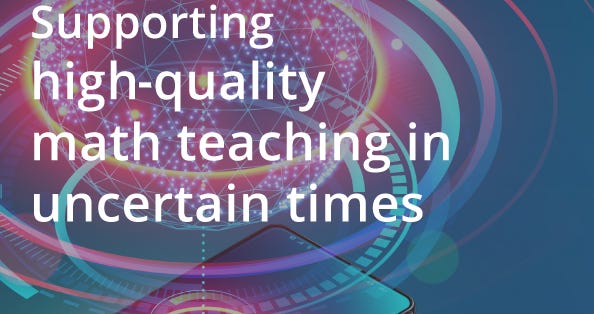Assessment for growth allows us to focus on learning
If it’s true the purpose of assessment is to improve teach and learning, then we need to ask are we getting the right data to do that?
This is important. The question every teacher asks many times a day - What do I do next? - is weighted with consequence. Their answer determines what happens to a learner, but the answer depends on the data that’s attended to.
A narrow data set = narrow interpretations
When we assess for judgment I’d say we don’t get the right data for the improvement of a student’s learning and teacher’s teaching. The set is too limited in scope because the reference point that guides the response is where a kid sits in relation to something - essentially we ask, Have they measured up?
The answer can only be yes or no. And too often, kids who fall into the ‘no’ category have this judgement pinned on them: they didn’t meet deadlines; don’t have the ability; are weak students; have some kind of ‘issue’ or learning need; they’re lazy …
What do we do next with these kids?
It all feels a bit ‘end of the line’, doesn’t it. For heaps of kids it is.
School assessment is powerful, but not for the reason we think it is
“assessment shapes who and what we are and cannot be treated as a neutral measure of abilities or skills” (Gordon Stobard, The Uses and Abuses of Assessment)
We’re being very dishonest if we think that thirteen years of academic judgement doesn’t impact on how someone comes to view themselves. Yes, doing well can be a great motivator for some, but as a foundation stone of a system that is about the development of people it’s on shaky ground when it comes to theory and research.
We also have the evidence that continually judging kids leads to negative outcomes. PISA data in New Zealand shows a dramatic drop in achievement across the curriculum during the National Standards era. And disturbingly, the drop was both in terms of results and attitudes. To quote from the 2019 PISA survey about reading
There has been a decline in reading for enjoyment in New Zealand. More students said they read only if they have to and read less often, and fewer students read fiction, non-fiction, magazines and newspapers regularly.
Fewer boys read for enjoyment and fewer were aware of effective reading strategies. Boys also reported receiving teacher-directed instruction and feedback from teachers more often than girls, and lower enthusiasm from their teachers.
Students’ awareness of effective reading strategies was slightly below the OECD average, and has declined slightly since 2009.
NZ’s proportion of poor readers increased from 14% in 2000 to 17% in 2015. Proportion of high performing readers declined from 19% to 14%.
In focusing on achievement and only valuing whether our kids measured up, we ended up with fewer good readers, more poor readers, and of those who could read, fewer of them wanted to.
What should we do next? if we want to promote reading growth?
The right kind of data
When we assess for growth, we need move beyond only valuing achievement data. To answer the question, What do I do next? with a learning focus I think it helps to see data in two ways:
Data about effect: this is achievement data associated with judgement, and it tells us about how many kids pass.
Data about effectiveness: this is attitudinal data, and tells us about how a kid feels about their ability to learn.
We can see both sets in the PISA data above. We can’t improve learning by only attending to the achievement data without regard to the attitudinal data.
If there was one thing I’d suggest looking for when adopting an assessment for growth approach it’s the data about effectiveness, with special attention to what Margaret Carr and Wendy Lee call willingness. They describe this as being influenced by
“a ‘reading’ of the environment or culture of the classroom (for example, whether the environment encourages curiosity and exploration; who will be chosen; whether expressing uncertainty or critique is OK)”
I think that how a kid ‘reads’ this determines to a large extent their engagement in learning. Ever felt you wouldn’t be chosen because others were favoured? Perhaps you haven’t wanted to be chosen? Why? What impact did these feelings have on the effort you made? Assessing who is willing is essential data if we are to focus on growing potential.
Respond to willingness data and students will show what they can do, the skills and interests they have, and the potential that is there for growth. All those things that Boaler calls a learner’s ‘assets’.


SMATA
A tool to help teachers, help students.
SMATA helps you to capture observations, understand learning trends, and encourage growth.




